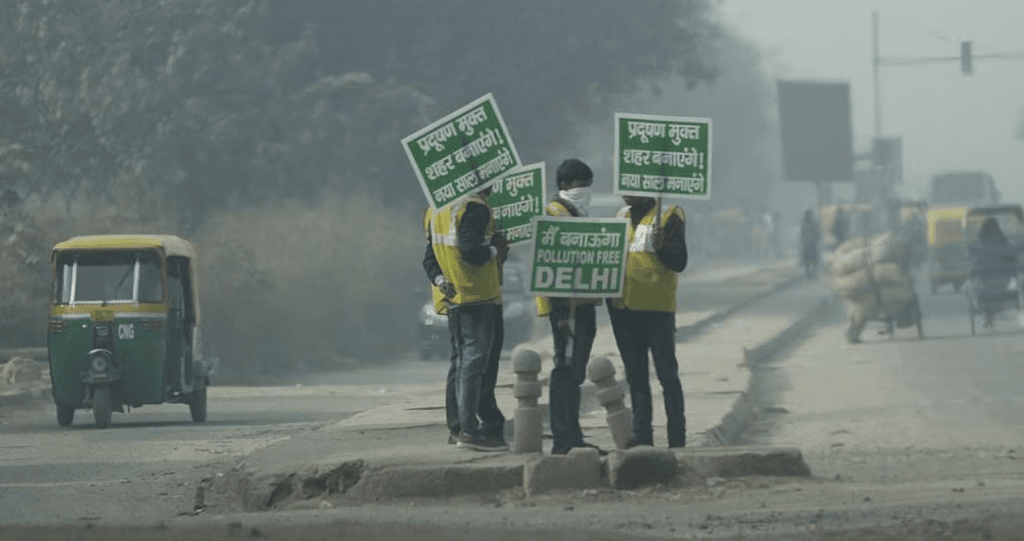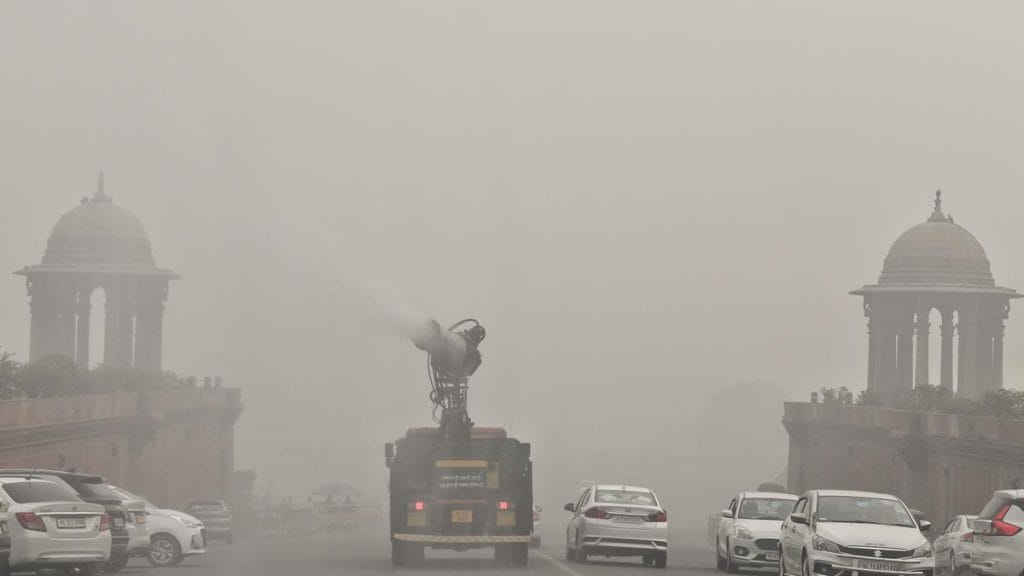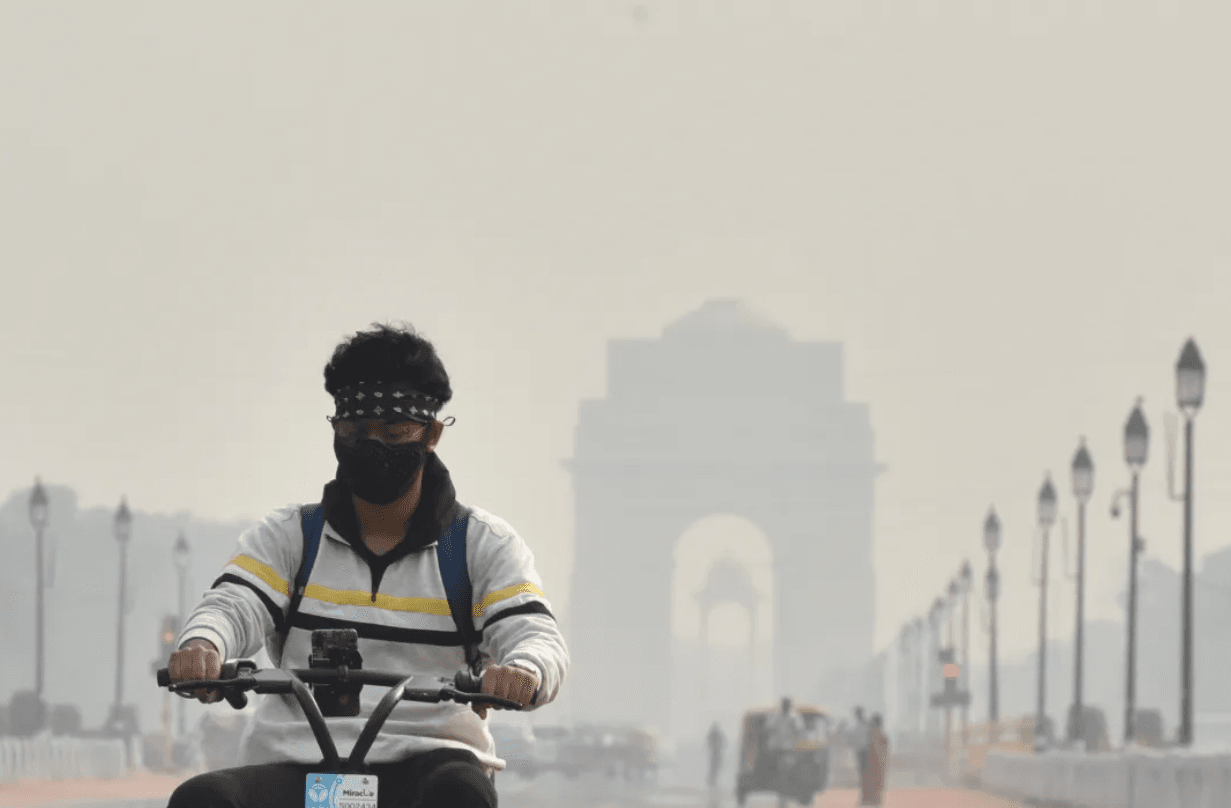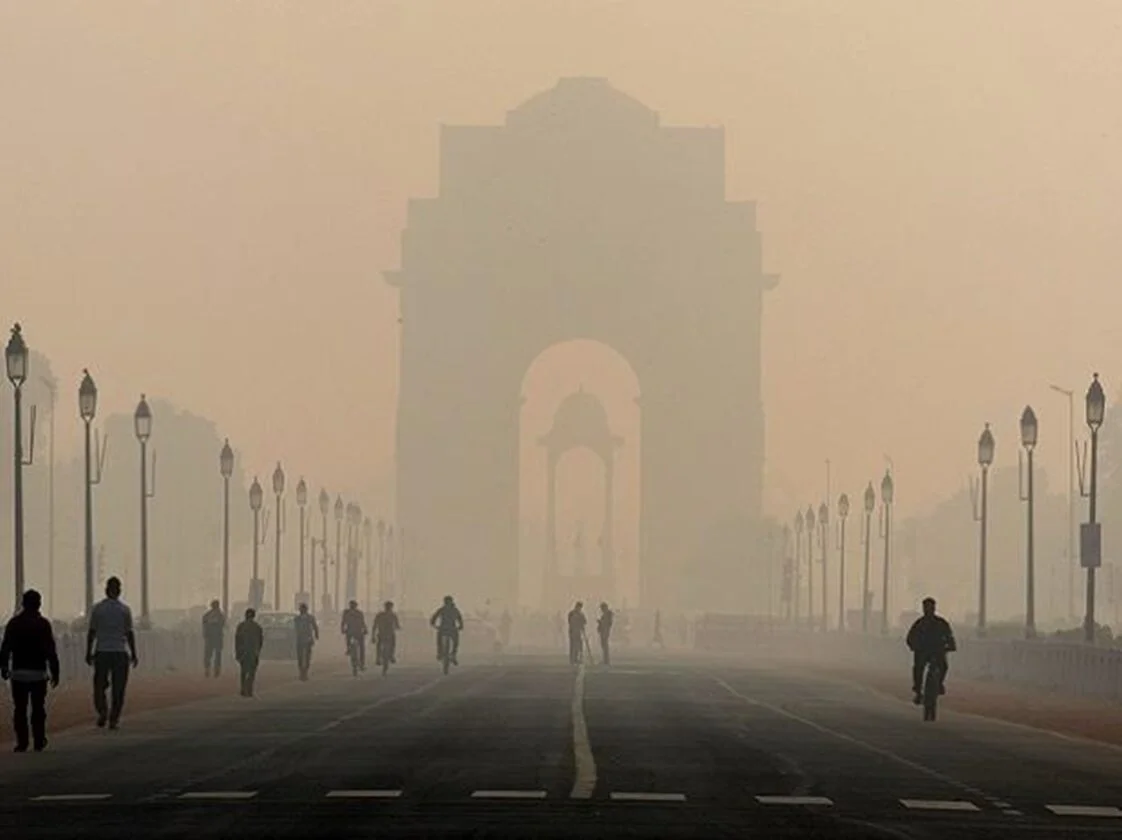The air in India is not just thick with smog—it’s heavy with neglect. The Lancet Planetary Health, a leading planetary health journal, delivers a sobering statistic: 1.5 million lives are lost each year due to prolonged exposure to air pollution. But beyond the death toll lies a systemic failure to act.
With industries spewing toxins, construction dust hanging heavy, and stubble burning smothering entire regions, India’s metro cities routinely top global pollution charts. What was once an environmental concern has now escalated into a full-blown public health emergency—a chronic, stealthy plague that shuts down schools, buries skylines in haze, and overwhelms hospitals with respiratory cases. 13 of the world’s twenty most polluted cities are in India. Yet, action remains sluggish, and accountability remains elusive.
A recent parliamentary report laid before the House on March 25, 2025, exposed that the Ministry of Environment has spent just 1 percent of the ₹858 crore allocated for pollution control this year, raising serious concerns about the government’s willingness and capability to combat India’s worsening pollution crisis.
But the problem isn’t just about unutilised funds—it’s about a system trapped in inertia, where bureaucratic inefficiencies, delayed approvals, and lack of urgency stall even the most critical interventions.
While people choke on polluted air, policy paralysis continues, and the funds meant to address the crisis sit idle, buried under layers of red tape.
To set the context, we need to first understand how we got here.
India’s pollution story
According to the U.S.-based Health Effects Institute, which studies the impact of environmental pollutants on human health, air pollution is one of the leading risk factors for premature mortality in India. The severity of the problem is reflected in data.

A 2018 study published in The Lancet Planetary Health found that in 2017, over 76 percent of India’s population was exposed to air pollution levels exceeding the National Ambient Air Quality Standard (NAAQS) of 40 µg/m³, while no state met the World Health Organisation’s much stricter guideline of 10 µg/m³. As of 2024, India continues to struggle, with IQAir reporting that 42 of the world’s 50 most polluted cities are located in the country.
Worsening the crisis is the fact that India continues to assess air quality using outdated standards—NAAQS was last revised in 2009—while the WHO updated its global air quality guidelines in 2021. This widening gap between international benchmarks and India’s official standards undermines efforts to acknowledge and act upon the true scale of health risks.
Compounding the problem is the inadequacy of India’s pollution monitoring infrastructure. ‘Most cities have only one continuous monitor—one data point is not enough for heterogeneous urban environments,’ says Kartikeya Bhatotia, Climate Fellow at Harvard University (2024).
Further, according to the Tracing the Hazy Air 2025 report by the Centre for Research on Energy and Clean Air (CREA), 28 of the 130 targeted cities still lack continuous ambient air quality monitoring stations (CAAQMS). Of the remaining 102 cities with such infrastructure, only 97 maintain adequate data coverage—and among them, 29 have actually shown an increase in PM10 concentrations. In 2024, 206 out of 253 cities with available data surpassed the national standards for PM10. The Indo-Gangetic Plain, which houses nearly 40 percent of India’s population, remains the most affected region, and all 28 cities in the National Capital Region exceed the prescribed limits.
Explaining India’s pollution crisis, Shyam Sundar Sridhar, a public policy professional working on environment and climate change, describes it as a policy paradox. On one hand, rising vehicle sales—particularly two-wheelers and cars—are viewed as key indicators of consumer demand and economic prosperity.
Vehicle ownership is celebrated as a symbol of a growing middle class and improving standards of living. But on the other hand, this very reliance on automobiles is contributing significantly to India’s air pollution crisis. ‘When consumer spending is equated with vehicle ownership,’ Sridhar explains, ‘any attempt to curb vehicular emissions is bound to meet resistance.’
Sridhar further emphasised that India’s environmental pollution crisis cannot be tackled through siloed efforts or by leaving the responsibility solely to the Ministry of Environment. Instead, it demands coordinated, cross-sectoral responses that bring together multiple departments and levels of governance. The gap between policy intent and on-ground impact is frequently widened by administrative delays, fragmented responsibilities, and a culture that prioritises box-ticking over outcome-driven action.
Bureaucratic gridlock and structural issues
Behind the haze that suffocates India’s cities is a governance architecture buckling under its own weight. While funding remains chronically underutilised, the deeper crisis lies in institutional rot—staff shortages, fragmented authority, and a culture of reactive, optics-driven measures point out both Debadityo Sinha, Senior Resident Fellow and lead of the Climate and Ecosystems team, and Manoj Kumar, a researcher at the Centre for Research on Energy and Clean Air (CREA).

At the heart of the issue is the Control of Pollution (CP) scheme, a centrally funded program which primarily provides financial assistance to regulatory bodies like the Central Pollution Control Board (CPCB) and State Pollution Control Boards (SPCBs).
The scheme follows a structured process: the CP Division allocates funds to CPCB, which then disburses them to SPCBs and other implementing agencies based on approved proposals.
On the ground, SPCBs are India’s frontline pollution regulators but they are hobbled by chronic institutional weaknesses, including understaffing.
‘Implementation challenges in air quality management, in part, stem from the fact that many state Pollution Control Boards are operating without their full sanctioned workforce, highlighting the need to prioritise the filling of long-pending vacancies,’ remarks Kumar.
According to the CPCB’s 2024 report, 49 percent of sanctioned posts across SPCBs and Pollution Control Committees (PCCs) remain vacant. Even the CPCB itself is functioning with a 16 percent vacancy rate. Kumar explains that the most commonly cited reason for vacant posts is the lack of eligible candidates in the feeder cadre—meaning promotions are stalled simply because there’s no one to promote. While rigid service rules limit flexibility, the consequence is a severely compromised enforcement apparatus.
State government thus routinely cites administrative and logistical delays for poor fund utilisation. In a December 2024 review meeting, Assam blamed election-related restrictions and floods; Uttar Pradesh cited delays in the tendering process; Meghalaya pointed to delays in data compilation from other departments; Telangana vaguely promised that utilisation would improve “from next week” and Karnataka said implementation would begin once tendering was complete.
States like Gujarat, Maharashtra, Karnataka, and Odisha report average fund utilisation of less than 40 percent, with large portions of unspent funds often parked in fixed deposits instead of being used for active mitigation. Sinha from the Vidhi Legal asserts that ‘We must not only look at how much the funds are spent, but also see how they are spent.‘
However, the problem goes beyond underutilised budgets. SPCBs function as multi-member bodies headed by chairpersons and member secretaries—typically political appointees or government officials. Meetings are irregular and decision-making tends to be reactive. Most board members serve in ex officio roles or represent entities with vested interests, such as municipal corporations or state infrastructure departments. This creates a fundamental conflict of interest, undermining any move toward stricter environmental regulation.
Sinha observes, ‘there is no real incentive for pollution control boards to enforce rules.’ He adds that even if there are 100 violations, sending notices in just 50 cases would be enough to set a strong precedent, but that doesn’t happen.
Despite multiple expert committee reports over the decades—from the Planning Commission to the CSE—diagnosing issues like unstable leadership, lack of technical staff, and weak institutional design, meaningful reform remains elusive. In fact, a 2017 Supreme Court judgement had rebuked states for appointing underqualified individuals to SPCBs and directed them to adopt new recruitment rules. However, compliance has been patchy.
Most SPCBs continue to prioritise bureaucratic familiarity over subject-matter expertise, sidelining qualified professionals from academia and civil society, as also highlighted by Ishita Srivastava, Annanya Mahajan and Arunesh Karkun from Sustainable Futures Collaborative (SFC) in their paper on Pollution Regulation in India in Economic & Political Weekly.
These governance gaps are further exacerbated by poor prioritisation of funds.
The missed opportunity
Despite ₹853.9 crore being allocated for 2025-26, only ₹7.22 crore had been spent by January 31, 2025. The ministry blamed bureaucratic delays, citing pending approval for the scheme’s continuation, effectively stalling fund disbursement. This marks a sharp contrast from previous years when funds were fully utilised—₹600 crore in 2022-23 and ₹847 crore in 2023-24.

However, the issue extends beyond procedural holdups. A Centre for Science and Environment (CSE) report revealed that 64% of NCAP funds were spent on filling potholes instead of tackling major pollution sources. While potholes contribute to air pollution, they aren’t significant enough to justify such a large share of the budget, explains Sridhar. He adds, ‘Fixing potholes is the easiest solution, but real pollution sources require far more complex interventions.’
Official data further highlights a skewed spending pattern: 67 percent of the Central Pollution Scheme’s allocation has gone toward road dust management. In contrast, other major pollution sources—industrial emissions, domestic fuel use, and biomass burning—have each received just 1 percent. Capacity building and monitoring, both crucial for long-term institutional reform, accounted for only 4 percent of the expenditure.
Sinha from Vidhi Legal highlights how some measures are more about optics than outcomes: ‘Water sprinklers and anti-smog guns are optics—they don’t actually solve the problem.’ He adds, ‘Vehicular pollution will not be controlled unless you limit the scale. If you allow numbers to grow, no amount of rules will help.’
Taken together, these spending patterns and institutional limitations point to a troubling disconnect between policy intent and execution. Despite well-structured schemes and sizable budgets, India’s pollution control framework remains hamstrung by weak governance, staff shortages, and a tendency to prioritise quick fixes over meaningful interventions.
The road ahead: Fight against air pollution
To move from intent to real impact in the fight against air pollution, India needs a phased, data-driven strategy rooted in local realities and accountability. The first step is to build granular emissions inventories for each region—only when key pollution sources are clearly identified can effective interventions be designed.

Only 50 out of 130 NCAP cities have completed source apportionment studies, a foundational step in air quality planning. The remaining cities are attempting to reduce pollution without a clear understanding of its key sources, says Kumar from CERA.
Without accurate source apportionment, even the best-funded schemes risk missing their mark. As Sinha puts it, ‘If you don’t monitor air properly, what action will you take?‘
Once local emissions profiles are built, funding must be directly linked to targeted actions based on this data, not blanket or cosmetic approaches. The third and most critical step is to track emissions reductions—not just ambient air quality levels—to evaluate whether interventions are delivering real outcomes. This shift from passive monitoring to active emission management is essential for long-term change.
‘Long-term innovation matters, but policymakers need actionable, scalable models now,’ says Bhatotia. The core issue, he adds, is the lack of consistent and impartial tracking and measurement.
Explaining the core reason behind this inefficiency, Sridhar explains that it is due to the lack of statutory backing for most pollution control programs. Unlike MGNREGS, which is supported by the MGNREGA law and therefore enforceable by courts, air pollution schemes remain policy announcements without legal teeth.
‘Without a statutory mandate, pollution schemes remain discretionary, making accountability nearly impossible,’ he adds. A legally mandated pollution control framework would compel compliance and offer citizens legal recourse when governments fail to act.
Financial accountability must also improve. He suggests a transparent, independent oversight body should be established to monitor how funds are spent and ensure they are actually used for pollution control—not diverted to low-impact optics like water sprinklers or pothole repairs. ‘A well-documented spending plan should precede budget allocation,’ he adds, ‘to ensure funds target real pollution control efforts.‘
India must also mobilise the private sector as a key partner in this effort. ‘The private sector can play a huge role—if incentivised—to drive innovation in clean energy and green construction,’ notes Sinha. For this to work, new programmes must be federalism-friendly, tailored to India’s informal economy, and structured to offer meaningful subsidies and regulatory support.
Taken together, these reforms—statutory backing, targeted funding, private sector engagement, and data-driven decision-making—can transform India’s pollution control regime from reactive to proactive. Without them, even the most ambitious plans risk being lost in translation from policy to progress.
About the author(s)
Vanita is a lawyer by training and writes stories at the intersection of business & public policy, law, regulations and building inclusive workplaces. She is a Staff Writer for The Ken.




